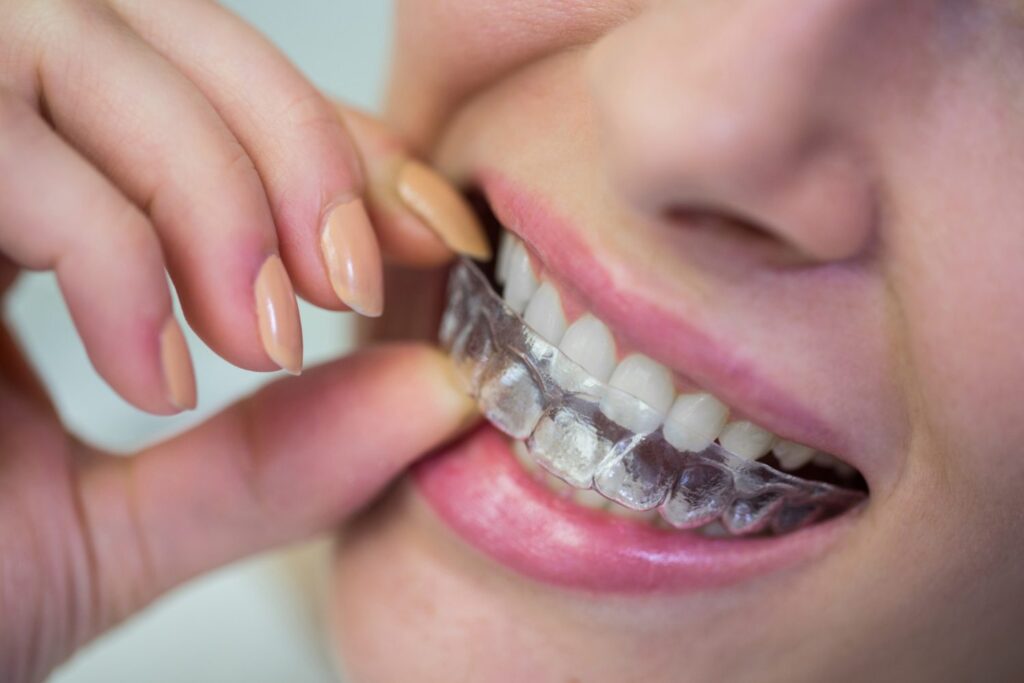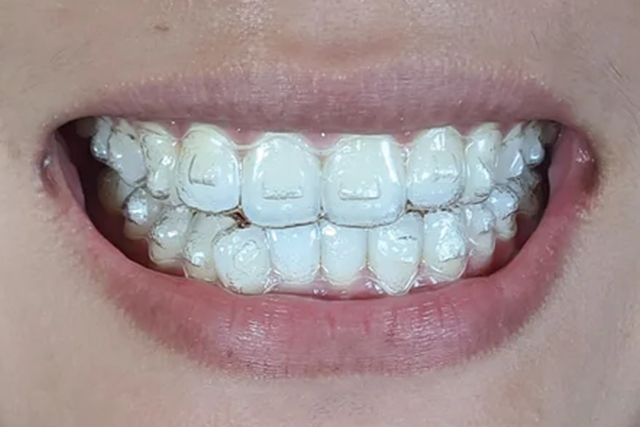How Invisalign Functions: Your Guide to Clear Aligners and Their Effectiveness
How Invisalign Functions: Your Guide to Clear Aligners and Their Effectiveness
Blog Article
Invisalign vs. Conventional Dental braces: Which Option Is Right for You?
When taking into consideration orthodontic treatment, the choice in between Invisalign and typical dental braces presents a number of vital factors that merit mindful examination. Invisalign provides a very discreet alternative with removable aligners, while typical braces give a more visible yet efficient remedy for severe misalignment. Each option encompasses unique advantages and downsides connected to aesthetic appeals, convenience, treatment duration, and cost. Recognizing these subtleties is essential for making a notified choice that straightens with your personal preferences and way of life. The inquiry remains: which option will best meet your orthodontic demands and expectations?
Introduction of Treatment Options

On the other hand, conventional braces consist of steel braces and cords that are adhered to the teeth. This technique applies continual stress in time to attain positioning. While effective for complicated orthodontic concerns, conventional dental braces require routine gos to for adjustments and can present obstacles in maintaining oral health due to the trouble of cleaning up about brackets and cords.
Both choices have their qualities, and the option often rests on certain oral problems, lifestyle preferences, and individual compliance. Ultimately, consulting an orthodontic expert is vital for determining the most suitable therapy strategy customized to individual needs. Comprehending the subtleties of each alternative can considerably affect the total success of orthodontic therapy.
Aesthetic Considerations
A considerable variable affecting the selection between Invisalign and typical dental braces is the aesthetic allure each therapy provides. Invisalign aligners are crafted from clear plastic, making them virtually undetectable when put on. This very discreet appearance is specifically appealing to teenagers and adults who may really feel awkward about their orthodontic therapy. The capability to keep a natural smile throughout the positioning process can significantly enhance the person's confidence in professional and social setups.
In comparison, conventional braces include steel braces and cords, which can be a lot more noticeable. While developments in orthodontic technology have actually caused the advancement of smaller braces and colored elastics, traditional dental braces still preserve a more obvious profile. For some individuals, the exposure of braces may discourage them from seeking necessary treatment.
Ultimately, the option in between Invisalign and standard braces might rest on individual choices pertaining to appearances. Clients that focus on discernment often favor Invisalign, while those who are much less concerned about exposure may opt for typical dental braces. Comprehending the visual effects of each option is important for making an educated decision that aligns with one's way of living and preferences.
Comfort and Convenience

In terms of benefit, Invisalign aligners are removable, enabling clients to enjoy their favorite foods without constraint and keep optimum dental health. Brushing and flossing are simplified, as the aligners can be gotten during these routines, whereas typical dental braces need mindful steering around braces you could try this out and cords.
In comparison, traditional dental braces require regular modifications, making them less hassle-free for those with busy timetables. In general, the convenience and comfort of Invisalign make it an attractive selection for numerous people seeking orthodontic treatment.
Therapy Duration and Performance
While both Invisalign and standard braces work in correcting dental imbalances, the duration of treatment can differ substantially between both alternatives. Commonly, Invisalign treatment can take anywhere from 12 to 18 months, depending upon the complexity of the situation. The clear aligners work by progressively shifting teeth into their preferred placements, and normal follow-ups with an orthodontist help guarantee development continues to be on course.
On the other hand, typical braces typically need a longer commitment, usually ranging from 18 months to three years. This is because of their fixed nature and using braces and cords, which can be a lot more reliable for severe imbalances and intricate instances (Invisalign). The therapy effectiveness of conventional braces is well-documented, as they enable exact modifications and better control over tooth activity
Inevitably, the choice between Invisalign and conventional braces may rest on both the anticipated therapy period and the specific dental issues handy. Consulting with an orthodontist is important, as they can supply tailored recommendations based on individual requirements, ensuring the picked approach lines up with desired durations and results.
Price Contrast and Insurance Alternatives
Price plays a substantial function in the decision-making process for individuals considering orthodontic treatment, whether selecting Invisalign or conventional braces. Usually, the price of Invisalign arrays from $3,000 to $8,000, while standard braces typically set you back between $2,000 and $6,000. Factors affecting these expenses consist of the intricacy of the situation, the period of treatment, and geographical location.
Insurance policy coverage can significantly influence out-of-pocket expenses. Many oral insurance coverage strategies supply partial coverage for orthodontic therapies, however the specifics can differ commonly. It is crucial for individuals to evaluate more information their insurance plan to figure out the extent of protection for either alternative. Normally, traditional braces might be more regularly covered by insurance plans contrasted to Invisalign, which some insurance providers classify as an aesthetic procedure.
Furthermore, a number of orthodontic techniques offer flexible layaway plan, making both treatment choices much more available. People need to ask regarding possible funding options and discount rates for in advance settlements. Reviewing the overall expense, visit this website including insurance advantages and repayment plans, is crucial for making an educated decision that lines up with both visual preferences and budget considerations.

Final Thought
In summary, the option in between Invisalign and typical dental braces rests on numerous variables, consisting of visual preferences, comfort, therapy period, and expense. Invisalign supplies a very discreet, detachable choice that assists in oral hygiene and nutritional adaptability, while standard braces may be better for intricate oral problems and typically come at a reduced rate point. Eventually, examination with an orthodontist is vital to evaluate individual circumstances and establish one of the most suitable treatment option for attaining optimum dental alignment.
When taking into consideration orthodontic therapy, the choice in between Invisalign and standard braces presents several vital aspects that merit mindful analysis.Comparing Invisalign and traditional dental braces exposes unique therapy choices for orthodontic correction.While both Invisalign and typical braces are reliable in fixing oral misalignments, the period of treatment can differ dramatically between the 2 options.Expense plays a substantial role in the decision-making procedure for people thinking about orthodontic therapy, whether opting for Invisalign or standard dental braces.In summary, the option in between Invisalign and conventional dental braces hinges on numerous elements, consisting of visual preferences, comfort, therapy period, and cost.
Report this page